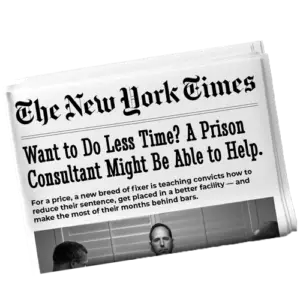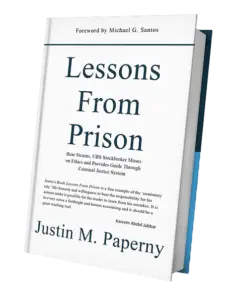I’ve lost count of how many people have told me they earned their time credits, stayed out of trouble, completed their programs, and still haven’t moved to home confinement. The conversation is always the same: “My counselor said I qualify, but there’s no bed. They’re still reviewing my file. They haven’t gotten to me yet.”
Now, six years after the First Step Act was signed into law, the Bureau of Prisons finally responded with a new directive. On May 28, 2025, Director William Marshall III told staff to move people to home confinement if they qualify and don’t need the support of a halfway house.
That’s a step—but not enough.
If someone in a federal prison camp already has housing, family support, job opportunities, and no need for a structured reentry center, then the question isn’t “when” they should move. It’s why they’re still in custody at all.
Michael Santos raised that exact question years ago. In Incentivizing Excellence, he wrote:
“We should pursue justice differently. Instead of waiting for calendar pages to turn, we should incentivize people in prison to pursue a path that will lead to their emergence as law-abiding, contributing citizens.” (66 Hastings L.J. 1549, 1551)
That’s what we should be building—more supervised home placement, fewer prison camps. But the system still defaults to the opposite: more confinement, more delay, more people sitting in dorms who should already be contributing outside.
The people who qualify under the First Step Act have already earned their time credits. But unless they submit the right documentation, they stay. No release plan. No housing verification. No proof of employment. The BOP’s default answer becomes silence.
We should be closing federal prison camps. Not just expanding home confinement, but eliminating unnecessary confinement altogether for people who’ve earned the opportunity to transition.
That was the entire purpose behind the site we created at PrisonProfessorsTalent.com. It’s a platform where people can submit what they’ve done—programs, writing, progress reports, service work—and show stakeholders why continued confinement makes no sense.
Michael wrote:
“The sentencing and corrections system fails to offer a mechanism that incentivizes or encourages an individual to atone.” (66 Hastings L.J. 1552)
Now we have that mechanism. But most people still aren’t using it.
Even under this new directive, staff will not take action unless the file gives them what they need. Housing. Employment. Program documentation. A timeline. If your record isn’t there, you’ll wait—even if you qualify.
That’s the consequence of delay. Not just from the BOP, but from the individual who waits for someone else to act first.
The numbers back this up. During COVID, over 15,000 people were transferred to home confinement. Fewer than 25 were returned to custody for new criminal conduct. That is not 25 percent. That is 25 people total. Michael called it years earlier:
“Recidivism rates show that the longer we expose people to ‘corrections,’ the less likely those people become to emerge as law-abiding, contributing citizens.” (66 Hastings L.J. 1549)
The data shows that people succeed when released early with structure—not when held in place because no one reviewed a file.
This is what the next phase of reform should look like:
- Close prison camps.
- Replace them with supervised work release and home placement.
- Require documentation of merit, not blind calendar-watching.
- Give staff tools to say yes—not just rules to delay.
Michael’s essay offered that structure years before any of it was implemented. He argued:
“Effective sentencing and corrections reform would incentivize a pursuit of excellence rather than measuring justice exclusively by the turning of calendar pages.” (66 Hastings L.J. 1563)
The May 28 memo shows the BOP is listening. But until they close the camps and create an infrastructure that actually moves people out—based on what they’ve done—we will keep hearing the same excuses.
Ask yourself:
- Have I submitted anything that shows I no longer belong in custody?
- Is there a plan in place that proves I can be supervised in the community?
- If my file was pulled today, would it support the referral?
Staff are looking for people who don’t need to be supervised in a prison setting. That doesn’t happen through conversation. It happens through preparation.
What have you submitted that makes your name the easiest one to approve?
We’ll walk through how to structure your file, what the BOP is actually looking for under this new memo, and why continued exposure to prison may be the biggest risk you face.
Justin Paperny



